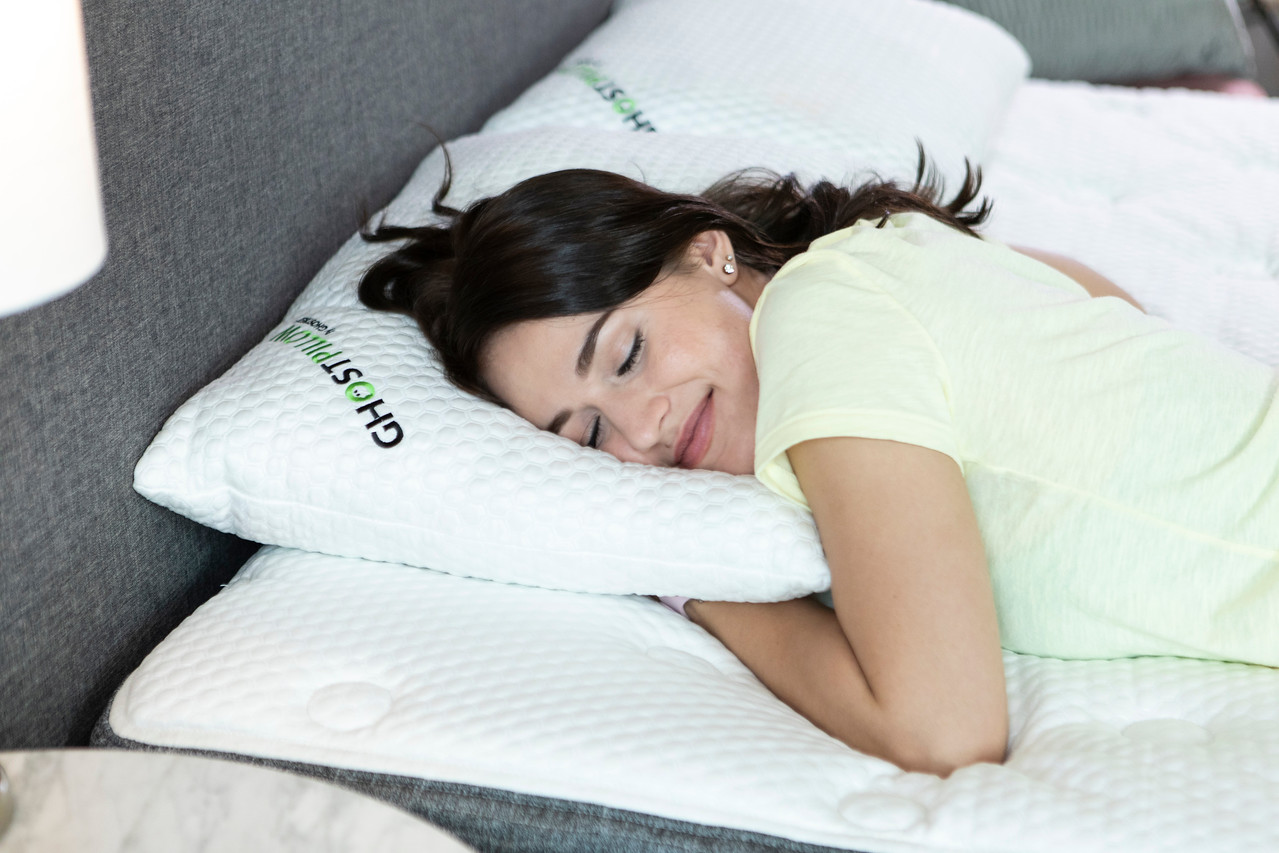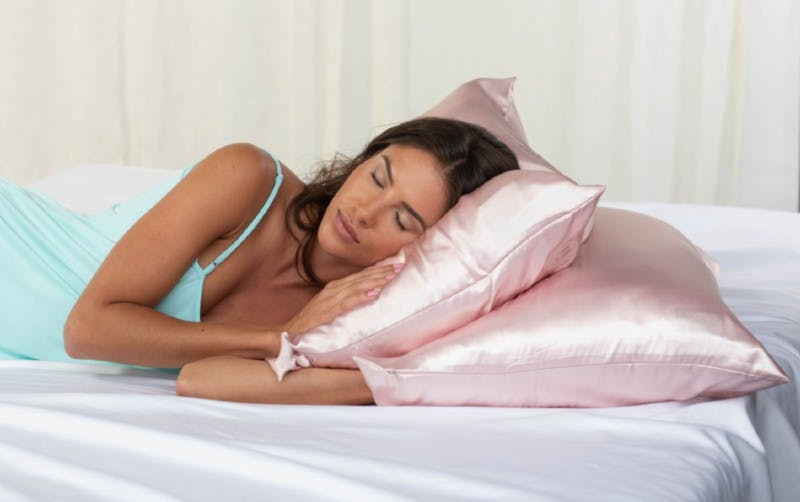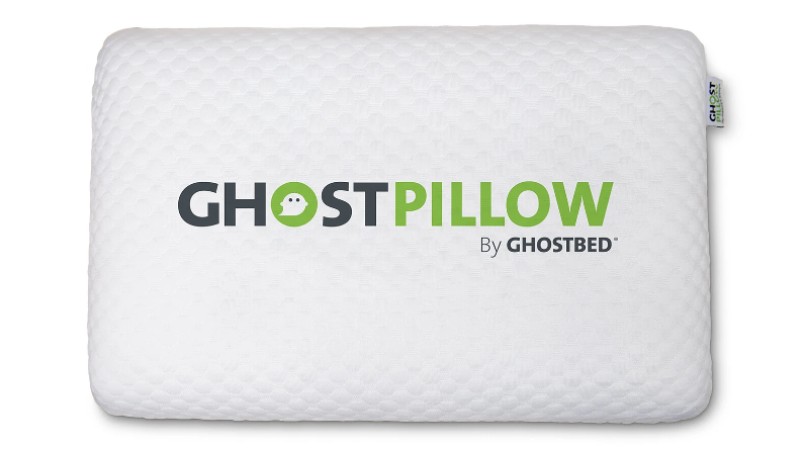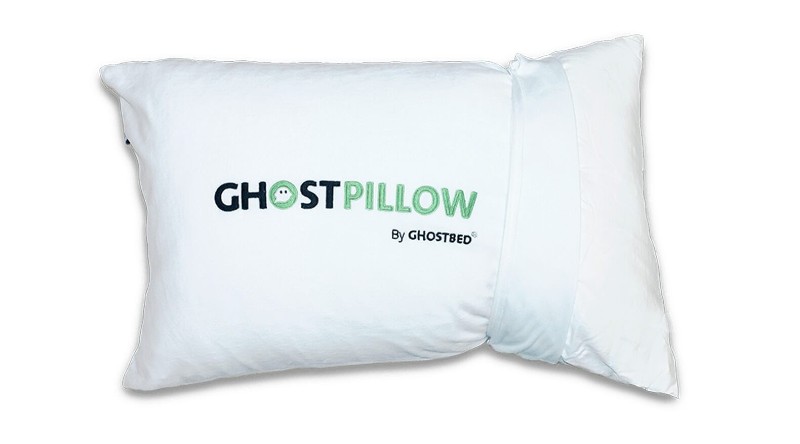How to Care for Your Silk Pillowcase
Last Updated on December 15, 2025
by Marc Werner, Founder - GhostBed
If you recently purchased a silk pillowcase, congrats! You’ve made a fantastic investment in your beauty sleep, as sleeping on silk helps to prevent wrinkles, reduce “bedhead” and tons of other beauty benefits. Few fabrics feel as decadent and luxurious as silk, and you’ll feel like royalty as you drift off to sleep.
But silk is also a bit more high maintenance than cotton and other common types of pillowcases, so it’s important to know how to properly care for this special fabric. Keep reading to learn how to wash your silk pillowcase so it lasts for years to come.
Overview: How to Wash and Care for Your Silk Pillowcase
While some silk items require dry cleaning, silk pillowcases are generally machine washable. Follow the specific care instructions for best results. For most silk pillowcases, these include:
- Water Temperature: Cold
- Detergent: pH-balanced (look for silk-specific products)
- Cycle: Gentle/low
- Drying: Line-dry
- Ironing: Lowest heat setting

I. Why Your Silk Pillowcase Needs TLC
II. How to Wash a Silk Pillowcase
III. How to Dry Your Silk Pillowcase
IV. How to Hand Wash a Silk Pillowcase
V. How Often Should You Wash a Silk Pillowcase?
VI. How to Store Your Silk Pillowcase
VII. Experience GhostBed Silk
I. Why Your Silk Pillowcase Needs TLC
Genuine silk is more expensive than cotton and polyester, and it’s also much more delicate. Similar to wool and cashmere, this luxurious fabric requires some extra care and consideration when it comes to laundering.
This is in large part due to how silk is made. Silk is mainly composed of fibroin, a protein that certain types of insect larvae secrete as they build their cocoons. There are many different types, but the best is known as mulberry silk, which is made from silkworms that are raised in captivity and are fed fresh mulberry leaves. Producers harvest the silk fibers while the cocoon is still intact, twisting together the raw silk strands to create a fiber that’s strong enough for knitting or weaving. It’s a complex and time-consuming process, but the result is a sturdy, beautiful and luxurious fabric.
Despite being one of the strongest natural fibers, however, silk loses up to 20% of its strength when it gets wet. It’s also particularly prone to perspiration stains, which can be troublesome if you’re a hot sleeper. But don’t worry—we’ll dive into how to tackle all these issues in the next few sections.
II. How to Wash a Silk Pillowcase
So, how do you wash a silk pillowcase? Once you understand the basics, it’s really quite simple.
While some silk items, particularly clothing, call for hand washing or dry cleaning only, many silk pillowcases on the market today—including GhostBed Silk—are machine washable.
Here’s what you need to know:
- Wash your pillowcase in cold water, in the gentle (or delicate) setting. Hot water may distort the fibers.
- Use a pH-neutral detergent. Solutions that are too acidic or alkaline can leave your silk pillowcase feeling rough or stiff. Check the detergent container and it will usually say if it’s gentle enough for silk and other delicate fabrics.
- Do NOT use bleach or fabric softener. Bleach is much too rough on silk and can disintegrate the fibers.
Optional: Use a Mesh Bag
Using a mesh bag (also referred to as a delicates bag) is optional, but worth considering if your machine is a top-loader with an agitator in the middle. Silk can sometimes get caught underneath the agitator, leading to small tears. A mesh bag is a great way to protect your pillowcase.
Removing Stains from Your Pillowcase
Because it’s so delicate, silk is more prone to stains—including the stains caused by the natural build-up from your sweat and hair oils, which can leave your pillowcase looking a little yellow. Check your pillowcase for stains before adding it to the wash; if you notice any stains, follow the steps below to pre-treat the fabric:
- Wash your pillowcase in cold water, in the gentle (or delicate) setting. Hot water may distort the fibers.
- Use a pH-neutral detergent. Solutions that are too acidic or alkaline can leave your silk pillowcase feeling rough or stiff. Check the detergent container and it will usually say if it’s gentle enough for silk and other delicate fabrics.
- Do NOT use bleach or fabric softener. Bleach is much too rough on silk and can disintegrate the fibers.
Pre-soaking your pillowcase in vinegar can also help remove stains and odors. Combine about ¼ cup of white vinegar and 1 gallon of cool water in a large bowl or a clean sink, and let your pillowcase soak in the mixture for about 30 minutes before washing.
III. How to Dry Your Silk Pillowcase
After you’ve washed your silk pillowcase, then what?
We recommend line drying your pillowcase for best results, but take care to keep it out of high temperatures and direct sunlight, which can damage the fibers and may cause color fading. In general, high temperatures aren’t compatible with silk.
Other tips:
- Don’t wring out your silk. If you want to get rid of excess moisture, gently blot with or roll in a towel.
- Don’t use a wooden drying rack, as it can leech dyes into the fabric.
- While we don’t recommend using a dryer, if you must: use a gentle, no-heat, air-only setting for no more than 15 minutes. Don’t use a fabric sheet or dryer ball.
Silk dries very quickly, and with proper line drying you can expect your pillowcase to be dry and ready for use in about 45 minutes.
Getting Rid of Wrinkles
Although silk is much less prone to wrinkles than cotton and other types of pillowcases, it can still happen. And when it does, your pillowcase may look much less luxurious than it feels.
There are a couple of methods for getting stubborn wrinkles out of silk:
- Hang the pillowcase up in your bathroom while you take a shower or bath; the natural humidity in the room can help soften creases.
- Use a handheld steamer, keeping it about 1 to 2 inches from the fabric.
- Use an iron on low heat (or the coolest setting); focus on steam instead of heat. Some irons have a specific silk or delicate setting, or you can place a cloth between the iron and your pillowcase for extra protection.
IV. How to Hand Wash a Silk Pillowcase
You can also hand wash your silk pillowcase to really maximize its life. Here are the steps to hand wash:
- Combine about one teaspoon of your detergent with cold water in a bowl or clean sink.
- Gently swirl the pillowcase around; be careful not to twist or wring the fabric, as that can damage the fibers.
- Drain the bowl, rinse it out, and fill it up again with cold water. Swirl the pillowcase around in the water to rinse thoroughly, and then remove and gently squeeze to remove excess water.
- Follow the instructions from the previous section for drying.
You can also add in a vinegar rinse prior to drying; to do this, combine a small amount of vinegar with cold water and swirl the pillowcase around gently for another minute. Rinse again thoroughly to completely remove any traces of detergent and vinegar.
V. How Often Should You Wash a Silk Pillowcase?
Now that you know how to wash your silk pillowcase, how often should you be doing it? While this can vary depending on your lifestyle and how much you sweat, a good rule of thumb is to wash your pillowcase at least once per week. Regularly washing helps remove dust and bacteria, as well as the natural buildup from your skin and hair products.
If you have frequent acne, or if you’ve been exposed to a cold or flu virus, you may want to wash your pillowcase more frequently. Our tip: keep an extra pillowcase on hand so you can rotate!
V. How to Store Your Silk Pillowcase
Silk is a very absorbent fiber, so you’ll need to take special care when it comes to storing your silk pillowcase. When not in use, store in a cool, dry area. For more long-term storage, use a breathable plastic bag and be sure to keep it away from direct sunlight.
Other tips:
- Tightly folding silk can cause sharp creases and weaken fibers; instead, softly roll the pillowcase before storing.
- Make sure your silk pillowcase is completely clean before storing, which helps protect against moths. Adding lavender sachets or cedar balls to the bag can also help.
VII. Experience GhostBed Silk

Sleep in luxury with GhostBed Silk, our 100% Mulberry silk pillowcase. In addition to the beauty and cooling benefits you get from sleeping on silk, we’ve doubled-down on strength and durability: featuring double-stitched edges and a strong internal zipper, your pillowcase will provide years of luxury with the right TLC.
Plus, explore other GhostBed products to complete your bedroom:
Marc has spent the last two decades designing & manufacturing mattresses and other sleep products, drawing on a lifetime of experience working with the material sciences. With several patents to his name, he works closely with the GhostBed team to create products with the perfect balance of comfort & support. Learn More



